Pricing Guides & Dictionary of Makers Marks for Antiques & Collectibles

COLLECTIBLE SILVER CUTLERY:
Identification and Appraisal Guides
Join the most updated and complete collectibles research online - Learn more...
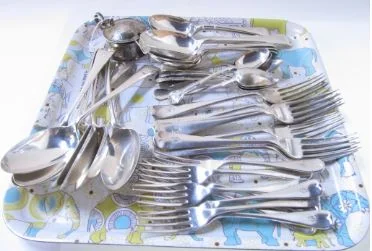 If you are interested in starting a collection of cutlery, silver pieces can be a great option. Not only are they practical for use, but they also have a rich history and are often beautifully designed. In this guide, we will explore the world of collectible silver cutlery, including how to identify different types of silver, how to care for your collection, and where to find rare pieces.
If you are interested in starting a collection of cutlery, silver pieces can be a great option. Not only are they practical for use, but they also have a rich history and are often beautifully designed. In this guide, we will explore the world of collectible silver cutlery, including how to identify different types of silver, how to care for your collection, and where to find rare pieces.
What is Silver?
Silver is a precious metal that has been used for centuries in the production of jewelry, coins, and tableware. It is a soft metal that is easily malleable, which makes it ideal for creating intricate designs. The silver used in cutlery is typically an alloy, meaning it is a combination of silver and other metals, such as copper or nickel. This is done to increase the durability and strength of the metal.
Types of Silver Cutlery
When it comes to collecting silver cutlery, there are a few different types that you should be aware of:
Sterling Silver Cutlery:
Sterling silver is the highest quality silver used in cutlery. It is composed of 92.5% pure silver and 7.5% other metals, usually copper. Sterling silver is stamped with a hallmark to indicate its authenticity.EPNS Cutlery:
Electroplated nickel silver (EPNS) is a silver-plated alloy that is commonly used in cutlery. It is composed of a base metal, usually nickel or brass, that is coated with a layer of silver through electroplating. EPNS cutlery is often stamped with the initials "EPNS" on the underside of the pieces.German Silver Cutlery:
German silver is not actually silver, but rather a nickel-based alloy that has a similar appearance to silver. It is often used in cutlery as a less expensive alternative to sterling silver or EPNS.
Identifying Silver Cutlery
When looking at silver cutlery, there are a few things to look for to determine the type of silver:
- Hallmarks: Sterling silver cutlery will be stamped with a hallmark, which indicates the purity of the silver and the manufacturer of the piece. EPNS cutlery may also have a hallmark, but it will not indicate the purity of the silver.
- Weight: Sterling silver is heavier than EPNS or German silver, so you can usually tell the difference by weight alone.
- Magnet Test: Sterling silver is not magnetic, while EPNS and German silver are.
Caring for Silver Cutlery
To keep your silver cutlery looking its best, it is important to take proper care of it. Here are some tips:
- Handwash: Silver cutlery should be hand washed in warm, soapy water and dried immediately with a soft cloth.
- Storage: Store your silver cutlery in a dry, cool place, such as a silverware chest. Avoid storing it in a humid environment, as this can cause tarnishing.
- Polishing: Silver cutlery will tarnish over time, but this can be easily remedied with a silver polish. Be sure to follow the manufacturer's instructions when polishing your silver cutlery.
Where to Find Collectible Silver Cutlery
If you are looking to start a collection of silver cutlery, there are several places to look for rare or unique pieces:
- Antique Stores: Antique stores often carry a variety of silver cutlery, including rare or unusual pieces. Be sure to check the hallmark to ensure that the piece is genuine sterling silver.
- Auctions: Auctions can be a great place to find rare or one-of-a-kind pieces of silver cutlery. Keep an eye on local auction houses or online auction sites for upcoming sales.
- Estate Sales: Estate sales can also be a good source of silver cutlery. Look for sales that advertise the sale of antique or vintage items, and be prepared to do some digging to find the best pieces.
Conclusion
Collecting silver cutlery can be a rewarding hobby for those interested in history and design. Whether you are looking for rare or unique pieces, or simply want to add some practical and beautiful items to your tableware collection, silver cutlery can be a great choice. By understanding the different types of silver, how to identify genuine pieces, and how to care for your collection, you can start building a collection of silver cutlery that will last for generations to come.
Unlock the true value of your collection with our comprehensive research guides from identifying makers' marks to appraising all kinds of antiques and collectibles, including items featured in this article.
Our up-to-date information will give you an accurate understanding of your items' worth. Don't miss out on this valuable resource - visit our research tools today!
In addition to some examples shown below on this page, you can also search our price guide for your own treasures.
Examples of related items from our Price Guides
-
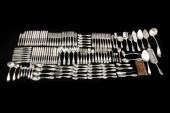 135PCS ASSEMBLED AMERICAN SILVER "OLIVE"
[more like this]
135PCS ASSEMBLED AMERICAN SILVER "OLIVE"
[more like this]
-
 AMERICAN CUTLERY CO. STEEL AND STAINED B
[more like this]
AMERICAN CUTLERY CO. STEEL AND STAINED B
[more like this]
-
 MERIDEN CUTLERY CO STEEL AND BONE HANDLE
[more like this]
MERIDEN CUTLERY CO STEEL AND BONE HANDLE
[more like this]
-
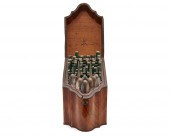 GEORGIAN MAHOGANY INLAID CUTLERY BOX, TO
[more like this]
GEORGIAN MAHOGANY INLAID CUTLERY BOX, TO
[more like this]
-
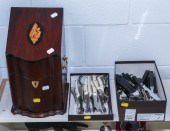 THREE CUTLERY SETS; GEORGIAN STYLE CUTLE
[more like this]
THREE CUTLERY SETS; GEORGIAN STYLE CUTLE
[more like this]
-
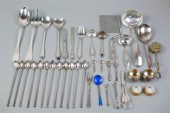 GROUP OF SILVER, PLATED AND SMALL PORCEL
[more like this]
GROUP OF SILVER, PLATED AND SMALL PORCEL
[more like this]
-
 DELUXE COLLECTION OF COLLECTABLE FOLDING
[more like this]
DELUXE COLLECTION OF COLLECTABLE FOLDING
[more like this]
-
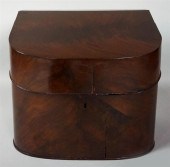 LARGE GEORGE III MAHOGANY CUTLERY BOXLAR
[more like this]
LARGE GEORGE III MAHOGANY CUTLERY BOXLAR
[more like this]
-
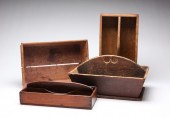 FOUR WOODEN TRAYS. Second half 19th cent
[more like this]
FOUR WOODEN TRAYS. Second half 19th cent
[more like this]
-
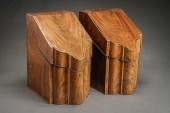 PAIR OF GEORGE III SATINWOOD INLAID MAHO
[more like this]
PAIR OF GEORGE III SATINWOOD INLAID MAHO
[more like this]
-
 MANHATTAN CUTLERY CO. SPEAR POINT BLADE
[more like this]
MANHATTAN CUTLERY CO. SPEAR POINT BLADE
[more like this]
-
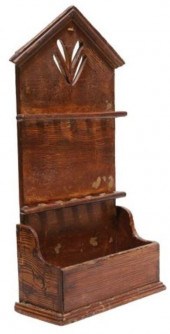 ENGLISH GEORGIAN PERIOD WALL-MOUNTED CUT
[more like this]
ENGLISH GEORGIAN PERIOD WALL-MOUNTED CUT
[more like this]
There are many more auction results available to our members...





